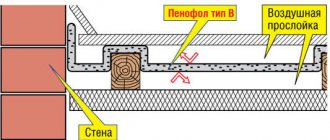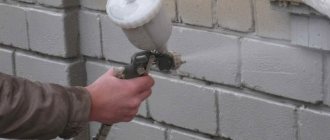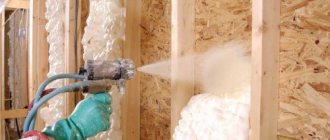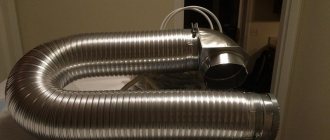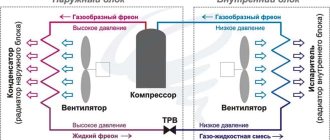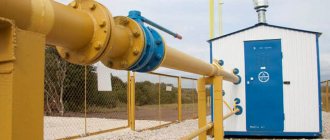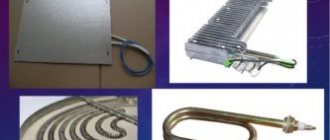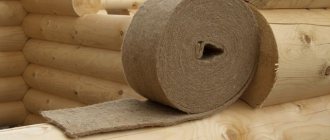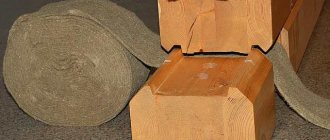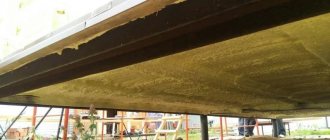Natural resources are not limitless: sooner or later they will run out. Therefore, humanity is increasingly using renewable resources for its needs. And it doesn’t matter whether it’s energy, construction or other areas of industrial production.
Natural insulation made from flax also fully belongs to the category of renewable building materials. Moreover, its use began so long ago that even in fairy tales for children, the currently popular polystyrene foam and basalt wool were not even mentioned allegorically.
The editors of the StroyGuru portal decided to find out how relevant linen insulation is in the 21st century, where are the advertising moves of manufacturers, and where are the real advantages of thermal insulation material.
Features of flax insulation
Flax is an annual bast crop with thin fibers (20-50 pieces per stem). In turn, the fibers consist of porous, up to 150 cm long, individual “hairs” (10-40 each), enclosed in a flexible shell. Thus, a flax stem can be fluffed into 200-2000 simple cellular structures, which perfectly retain heat and absorb sound waves traveling through the air.
In its pure form, flax cannot be used for insulation - it cakes quickly due to the presence of a hard trunk and is susceptible to rotting. Therefore, primary processing in the form of creasing and scuffing is necessary to free the fibers from the fire.
However, even in this form the fibers quickly cake. Therefore, synthetic substances (sintepon) are added to them, which are responsible for the elasticity of the fabric and its volume. To combat putrefactive microflora, a heat treatment method is used, as a result of which all microorganisms die - the material becomes biologically pure. But this does not mean that flax will not begin to deteriorate over time. Two factors contribute to this:
- starch (an excellent base for the development of pathogenic microorganisms) - added to mats for gluing fiber;
- constant dampness in a room with flax insulation.
In addition, we should not forget about the high degree of flammability of flax fiber, which requires treatment of tapes, canvases and mats with fire retardants. These points need to be taken into account when purchasing linen insulation.
Is it really as environmentally friendly as they say?
The cost of flax insulation is very high. Therefore, to promote a product on the market, you need features that should stimulate sales growth. Among them is the absolute environmental friendliness of the product.
This advertising move is confirmed by the quality mark awarded by the EU Commission to environmentally friendly building materials. In this regard, we note that for the most part all construction products made from flax from Western companies have this mark. What about in Russia? After all, we buy mainly domestic products.
Let's try to find out whether linen insulation is really environmentally friendly. For analysis, it is necessary to know the composition of the insulation. And here questions arise. If boron salt was used as a fire retardant, and starch is the binder, then there is no doubt about the environmental friendliness of flax insulation.
But to improve consumer characteristics, chemical binders are increasingly being used instead of starch (in some brands up to 30%). In this case, there is no need to say that the products are natural, although manufacturers claim the opposite.
Fire flax as insulation
Linen insulation can be purchased on the Internet or a hardware store. Insulation of a house plays an important role in its arrangement. This stage is the determining factor in the comfort of your stay in the building. Therefore, more and more types of different insulation materials are appearing on the construction markets. One of these varieties is considered to be flax insulation. This material is made from natural plant fibers and is absolutely safe for health. Therefore, it is loved by most adherents of environmentally friendly products.
Advantages of flax insulation
Linen insulation is made from the plant of the same name - flax. It has a pleasant smell and will allow you to insulate your home without harming your health.
Linen insulation is a new generation of insulation. It does not require additional quality checks, as it is made from environmentally friendly ingredients.
Most modern insulation systems, one way or another, affect your health. For example, seemingly safe glass wool spreads small and sharp particles. They enter the lungs and can cause asthma attacks. It’s not worth even talking about polystyrene foam; this material releases toxins, which, according to unverified data, can lead to oncology.
Flax is devoid of all these shortcomings. But it has a number of advantages.
Among the advantages of flax insulation, it is worth noting good thermal insulation qualities and long service life
Advantages of linen insulation:
- Linen has antiseptic properties. Therefore, fungus and mold will never appear on walls that are insulated with this material.
- Insulation made from this material does not cause allergies, which is especially important if small children live in the house.
- The thermal insulation qualities of flax will not go away if it gets wet.
- Linen material does not have the ability to become electrified.
- The heat capacity of flax is high. In summer, it prevents heat from entering the house, and in winter, on the contrary, it retains heat.
- The sound insulation properties of linen material are at a high level.
- Linen slabs cannot harbor mice and rats. This is especially important for private houses.
- You can easily attach linen insulation to the walls. At the same time, it will not crumble and emit dust.
- Natural flax insulation prevents condensation from forming. This quality is especially important in the winter season.
- Linen insulation is made on a natural basis. Therefore, it does not emit substances hazardous to health and can be used to insulate internal walls.
- It has a very long service life. Manufacturers assure that it can be used for 75 years.
Ecolene is an excellent insulation material for insulating the interior walls of a house. Such thermal insulation will not make you worry about the health of your loved ones.
Disadvantages of linen insulation
Linen insulation has a lot of advantages. However, this fact does not detract from its shortcomings. In order not to regret your choice later, you also need to get acquainted with them.
The disadvantages of linen insulation are not so significant, however, it is precisely because of them that this wonderful material is still not very popular.
People do not always have the opportunity to insulate their homes with linen material. It's all about his shortcomings. Let's get acquainted with them.
Disadvantages of linen insulation:
- Linen insulation has a high price. It is more expensive than most other insulation materials.
- Also, many complain about the narrow range of use of such material. For example, they cannot be used to insulate roofs or be used for outdoor work.
- In combination with wooden walls, such insulation will quickly absorb moisture. Because of this, the material may begin to rot.
- When stretched, this type of insulation can tear.
- If linen insulation is used in rooms with high humidity, it will have to be treated with a special moisture-proof impregnation.
- Despite appropriate processing, flax insulation can become the main component of a fire in the event of a fire.
Linen insulation can be laid on any dry surface
Linen is a good material for insulation. Despite its shortcomings, it is considered one of the best options. Indeed, in most cases you will not have to deal with the disadvantages of flax.
Types of linen material
Linen has been used for making fabrics and clothing since ancient times. Previously, shirts, dresses, bags and other wardrobe items were made from it. Such clothes did not have a bad effect on the body and looked beautiful.
Taking advantage of the experience of our ancestors, modern people also began to sew linen clothes. And having noticed the unique properties of this fabric, they began to think about using it in construction. It turned out that flax not only retains heat, but also prevents heat from penetrating into the house. Few materials can boast such properties. Therefore, they began to make insulation from flax.
It may seem to you that the property of flax not to allow heat to pass through is an advertising campaign by manufacturers of linen insulation. To make sure that this is not the case, in the hottest weather you can wear a linen dress or a long-sleeved shirt (the linen should be thick enough), after walking for several hours, you will notice that you feel hotter in a regular T-shirt than in such clothes with a long sleeve. sleeve.
Linen insulation is produced in different variations. We are talking not only about the shape of the insulation, but also about its texture. Let's see what products are used to insulate houses.
Types of flax insulation:
- First of all, it’s worth talking about linen wall insulation. They can be sold in the form of mats, strips, rolls or slabs. Each of the options is quite convenient, and here the choice depends more on your preferences. Many people choose mats.
- There are also linen insulation materials for sealing cracks. This is flax tow and sanitary flax. Tow is quite narrow, but it rolls out well and is hammered into walls; it is used for insulating houses made of ordinary timber. Plumbing flax has different sizes and is used for buildings made of profiled timber and calibrated logs.
Source: https://vashslesar.ru/uteplenie/kostra-lna-kak-uteplitel.html
Characteristics
Information about the technical and operational characteristics of insulation made from flax fibers is still contradictory. There are a number of objective reasons for this. Therefore, we will not refer to different sources to explain our choice, but will give the lower and upper limits of each indicator:
- thermal conductivity coefficient - 0.03-0.04 W/(m*K);
- density - 15-38 kg/m3;
- sound absorption coefficient - 0.98;
- operating temperature - from -70oC to +169oC;
- service life - more than 50 years;
- flammability class - G1;
- vapor permeability - MU1 (yes, equal to 0.4 mg/m*h*Pa);
- mat sizes: length - 100-120 cm; width - up to 60 cm; thickness - 5 and 10 cm.
Rolls can be up to 160 cm wide, and cuts from 20 to 400 mm.
What is linen insulation (video)
Linen insulation is an environmentally friendly modern option that will definitely suit your taste. Therefore, if you are not afraid of its high cost, then you can safely buy it, you will definitely not be disappointed.
Kostra is waste from plants (flax and hemp), after primary processing, which are used in the spinning industry.
Composition of bonfire: lignin (21...29%), cellulose (45...58%), pentose (23...26%). The fire consists of particles measuring 10...20 mm in length and 0.1...1.5 mm in thickness (photo 1).
Bonfire as a building material - application
It is used in construction for the manufacture of thermal insulation materials and as a filler for materials with improved thermal performance. There is interesting data that with a wall thickness of 400 mm using firewood insulation, to heat a room of 100 m2 in winter, only 3 kW/h of electricity is needed. Firewood is most widely used for the construction of private houses and cottages with wooden frames. It is also used for making floors.
The basis of bonfires is flax or hemp, the properties of which are almost the same.
Bonfire can be produced in the form of:
- bulk fires (in bags);
- fire slabs;
- blocks and bricks from fires.
Kostrobeton
Kostrobeton is lightweight concrete with organic filler - fires, photo 2. Kostro concrete consists of fires, binder (cement or lime), sand, water and, if necessary, hardening accelerators. Hemp or flax fibers contain a large amount of silica SiO2 (silicon dioxide), which, when interacting with water and binder, due to hydration, forms a strong contact and connection. Blocks or walls made of bone concrete continue to slowly gain their strength throughout the entire period of operation and, in addition, as they gain strength, they absorb carbon dioxide, which creates a comfortable atmosphere in the room.
Composition of bone concrete
The approximate proportion of the components of fire concrete by weight is as follows: 1: 0.44: 3.7: 1.85, (C: K: P: V), where C is Portland cement M400 or M500, K is fire, P is sand, V is water. First, you need to mix the fire with sand, then seal it with a water-cement mixture and mix until a homogeneous solution is obtained.
Fire concrete should be laid in layers (10…15 cm) with compaction. The specific density of bone concrete is 400…700 kg/m 3 . Such concrete has good heat and sound insulation. Construction using fire pits significantly reduces the cost of building residential buildings.
To build a medium-sized house (about 150 m2 in area) you need 10...12 tons of fires.
Used for the construction of external and internal walls. The technology of construction from bone concrete has found application most of all in countries such as Australia, Germany, Great Britain, France, the USA and has begun to develop in Ukraine. In Ukraine, the construction of houses from firewood is presented.
Fire plates
The production of fire slabs occurs by pressing firewood and a binder, photo 3. Such slabs have good sound-absorbing ability. Depending on the area of application, the specific density of the plates is 300...600 kg/m 3.
Blocks and bricks using bonfires
Blocks and bricks are also produced by pouring fire concrete into forms or by pressing, photo 4. Blocks and bricks from firewood have a thermal conductivity coefficient of 0.18 W/(m*K). The thermal insulation characteristics of these blocks and bricks are high, for example, a wall made of 15 cm thick fire blocks is equivalent in thermal insulation to a brick wall two bricks (510 mm thick).
Blocks and bricks made from firewood do not have high strength characteristics, for example, the compressive strength is 1.2 MPa. Therefore, the limitation for the use of brome blocks and bricks is its load-bearing capacity. Of course, it is possible to increase the compressive strength by pressing and adding sand with a binder, but this will significantly reduce their thermal performance.
Advantages and disadvantages
All building materials have their advantages and disadvantages. Linen is no exception. According to reviews on the forums, the advantages of this type of insulation include:
- high thermal insulation properties - the thermal conductivity coefficient is only 0.03-0.040 W/(m*K), which is only slightly inferior to polyurethane foam, is on the same level as polystyrene foam and is superior to mineral wool;
- durability, confirmed by practice - the service life is 50-100 years (manufacturers indicate the figure 50, but in practice, when dismantling wooden buildings, linen insulation was in working condition for 75-100 years);
- vapor permeability, allowing the walls to “breathe”, removing excess moisture from the room to the street;
- increased hygroscopicity, which on the one hand is a negative property - it gets wet quickly, on the other hand, flax-based insulation, like wood, regulates the humidity regime in the room: when there is an excess, it absorbs steam molecules, when there is a deficiency, it releases, and dries very quickly. The big advantage of this property is that no vapor barrier is required. Consumers do not need to worry about frequent but short-term wetting of flax, because... after drying, all characteristics are fully restored. The only thing that can happen is darkening of the fibers;
- possibility of installation by surprise, without the use of glue and dowels. Such installation became possible after manufacturers began to make mats slightly larger in width and length (2.5 cm) than the standard dimensions of the lathing cells or the distance between the lags (beams);
- environmental safety, not only in relation to homeowners (not an allergen, does not emit harmful and toxic substances when heated and burning), but in general flax absorbs CO2 when grown, is completely decomposed, can be reused, and is a renewable resource;
- good soundproofing characteristics, but only sound waves traveling through the air are absorbed. Linen is practically useless against structural and impact noise;
- simple and safe installation - all work can be done with your own hands without the use of special clothing. The problem only arises if the mats need to be adjusted to size - flax fiber does not cut well.
Among the many advantages of a heat insulator, we should not forget about the disadvantages . And they are critical in many ways. Among the disadvantages:
- high price. The cost of the material is available only to wealthy property owners;
- increased flammability. It is not for nothing that gunpowder contains flax components. Therefore, treatment with fire retardants is mandatory. And not just spray with boron salts, but add up to 13% of this substance to the mat. After treatment, the flammability class is reduced from G3 to G1 (does not support combustion);
Attention: studies by Finnish scientists have shown that with a mass fraction of fire retardants less than 12%, flax products burn well. And the lower the percentage of boron salts, the more difficult it is to extinguish the flame.
- subject to complete decomposition, no matter what the manufacturers' advertising brochures say. However, there is one thing: putrefactive microflora reproduces only in an environment with constant humidity or the presence of a base in the form of starch. This must be taken into account during construction and renovation;
- is damaged by rodents, which again conflicts with advertising, albeit with a caveat. Mice and rats do not digest flax fiber, so the advertisement seems to be right - the product is not included in the rodent food chain. But the fact that this natural insulation is the favorite habitat of these pests is modestly kept silent;
- loss of operational properties (heat and sound insulation), under mechanical loads (compression);
- requires treatment with moisture-protective compounds when used in rooms with high humidity, which further increases the cost of thermal insulation.
Video description
How flammable linen insulation with a fire retardant is is shown in this video:
Ecological point of view
Flax and hemp are renewable materials. And their production cycle is less hazardous to the environment than the production of mineral wool, basalt wool and expanded polystyrene. Another advantage of natural thermal insulation materials is recycling. If necessary, insulation materials can be converted back into raw materials and similar materials can be made from them.
Application area
In terms of sales volume of 0.5% in physical terms (in m3), linen insulation in slabs (together with tapes for inter-crown insulation) occupies a modest last place in the market of thermal insulation materials. There are two reasons: the high price and a special niche in thermal insulation, tied to wooden houses. It is rarely used in buildings made from other types of building materials, although flax can be used for thermal insulation:
- floor, but only along joists (not used under screed due to loss of performance properties under pressure);
- walls, both inside and outside. But here there are limitations: you cannot use the “wet method” of insulation;
- interior partitions, but mainly as a sound-absorbing material;
- ceiling, but outside. For internal insulation, the height of the apartment or house is reduced too sharply (to the thickness of the mat of 10 cm, you also need to add cladding or a suspended (suspended) ceiling);
- roofs, but only pitched;
- door and window blocks - serves as a seal.
In addition, fiber tapes are used to insulate the inter-crown joints of log houses, and tow is used to seal various cracks and gaps. If we look at the types of buildings, flax can be effectively used in frame and wooden houses and apartments.
Frame house. The difficult climatic conditions of Russia did not allow us to find the optimal insulation option for frame houses. Negative nuances always appear. With the advent of linen mats for insulation, it turned out that they are almost ideally suited for this type of building: they perfectly protect against noise, heat loss in winter and overheating of house rooms in summer. The ability of insulation to regulate the indoor microclimate all year round turns flax into the main type of heat insulator for frame buildings.
Wooden house. Initially, flax and wooden houses were inseparable. Their cooperation dates back several thousand years. Therefore, with the advent of new qualities in flax insulation, the most natural way to use flax-fiber thermal insulation materials for insulating various structural elements of a wooden house is seen.
Apartment. Linen mats do their job well in apartments when insulating floors and walls. Limitations exist for the bathroom and kitchen due to the high hygroscopicity of the fibers.
Possibility of using natural insulation materials
Hemp and flax mats are used to insulate roofs, attics, and external walls. They are also used for soundproofing floors and partitions indoors.
The material provides universal protection of premises from the penetration of extraneous sounds and heat loss. Here are the buildings in which hemp and flax are widely used:
- Frame houses . In the weather conditions of central Russia, Siberia and even in the far north, frame houses are built. Naturally, they require careful insulation. The properties of flax and hemp materials are perfect for this. Natural insulation not only protects from the cold in winter, but also prevents the rapid heating of rooms in the sultry summer.
Insulation of the attic with “eco” slabs Source ekoplaneta.su
- Wooden houses . Modern insulation in the form of mats and slabs, which have undergone industrial processing, protect the house from moisture, wind, and extraneous noise. Moreover, they do not require the use of vapor barrier film. But it is precisely from such films that wooden houses most often suffer.
Insulation of a log house with “eco” slabs Source ekoplaneta.su
- Baths and saunas. They purify the air, are not afraid of dampness, are safe for humans, retain heat well - ideal thermal insulation for hot and humid rooms.
The use of hemp mats for sound insulation inside a private house Source ekoplaneta.su
Types of insulation
The construction industry offers consumers several types of linen insulation:
- tow;
- felt (linen);
- batting (linen);
- mats (slabs).
Tow. Tow is a waste from the processing of flax and other bast crops (hemp, jute, etc.), resulting from the scutching process. Consists of coarse, short, tangled fibers, heavily contaminated by fire. It has been used in construction since the beginning of flax cultivation to produce textiles.
It is mainly used for inter-crown insulation of log houses. But it can be found in the openings of doors and windows (instead of polyurethane foam), as well as in the joints of slabs of the main insulation, for example, polystyrene foam.
Felt. The definition of “felt” has nothing to do with linen insulation, because the word arose to define a dense non-woven material made from wool. But manufacturers of a similar material made from flax fibers could not come up with an independent name for dense non-woven tapes. So they began to call their products linen felt.
The product is made from long fibers using needle-punched technology - this is when special barbed needles form a fabric, holding it together with its own fibers. Used as inter-crown linen insulation.
Batting. Batting is another type of non-woven fabric. It differs from felt in that nylon or cotton thread is used to hold the flax fiber layer together. It is used in the same way as felt, but with one difference: it is laid in two layers. This requirement is explained by production technology - the insulating tape has a low density. Total about 500 g/m2.
Mats. Insulating mats made from flax fiber are produced using starch, which serves as a binder between the fibers. In many industries, mats are additionally stitched with silk or cotton threads. Thermal insulation material is produced in the form of rolls and slabs 5 and 10 cm thick. It is used to insulate various building structures.
Attention: in materials about linen insulation, another type is called: flax-jute. However, using the term “flax-jute” to define insulation as an independent type consisting of a combination of flax and jute fibers is incorrect. It would be more correct to say that other types of bast crops can be added to flax fibers. After all, the so-called “flax-jute” insulation is produced in the form of felt, batting and mats. Therefore, it is impossible to say that this is an independent type of heat insulator.
Buy flax fire in Kyiv, prices, photos
The result of processing bast crops, in particular flax, is long and short flax fibers, and the process itself is accompanied by the formation of fires - waste from the woody part of flax stems.
Flax flax consists of wood particles 1-10 mm long and 0.3-1.5 mm thick.
Being a waste product of primary processing, firewood has found wide application both as a separate finished product and as a raw material for further production of products.
Where is flax fire used?
- Insulation of floors and attics. It should be noted that as a fire insulation it has a number of positive qualities: natural material, low thermal conductivity.
- Kostra serves as a raw material for the production of pressed slabs (kostroplits), which are widely used in construction as a heat and sound insulating material, and in the furniture industry. The strength and rigidity indicators of such boards practically correspond to those of similar products made from coniferous wood, and in terms of shrinkage and warping properties they are superior.
- Pellets from fires are a source of fuel that does not lose its relevance among segments of the fuel market.
- Shredded to 2 mm, kernels are used as a component in the production of cardboard.
- Kostya is used as insulation in agricultural greenhouses, retaining moisture and heat in them.
The company, a manufacturer of inter-crown insulation made from natural flax fibers, offers flax fire for sale at an affordable price.
For questions regarding delivery, payment or performance properties of products, you can contact our company’s specialists
Ukrainian language story - go
Construction tow is a coarse, short, tangled fiber, a waste product from the primary processing of flax and other bast crops. Such fiber is unsuitable for spinning and is heavily contaminated by fire.
Construction tow is a traditional material that has proven itself in construction. Tow has long been used to insulate wooden houses as a heat-insulating material. Despite the development and creation of modern inter-crown insulation, tow continues to be in demand and is widely used in construction for insulating wooden and panel houses, in particular for sealing the distances between the crowns of wooden log houses, sealing wooden and window blocks, filling voids, and air conditioning ducts.
Construction tow is a good option for caulking a wooden house. Thanks to high-quality caulk work, wooden houses retain heat and sound insulation better. In cases where the house is built from rounded logs or profiled timber, it is better to use tape inter-crown insulation, since it compacts evenly.
Construction tow consists of fibers from bast crops; accordingly, flax tow is made from flax fibers. As a rule, construction tow is made from flax fiber No. 2 - No. 4. The number corresponds to the length of the fibers. Such fibers are not suitable for spinning. Natural fibers are combed using a carding machine, and are additionally cleaned from brome, which is the wood of the flax stem. The quality of the material depends on the length of the fibers and the degree of their purification.
The advantages of construction tow over polyurethane foam is, first of all, that it does not glue adjacent surfaces and, accordingly, prevents possible shrinkage of buildings in the future.
The material has all the advantages of flax:
- prevents the occurrence of fungi;
- has bactericidal properties;
- tow is very durable;
- no static electricity charges arise on flax fibers;
- Construction tow does not contain any hazardous or harmful components to human health, unlike mineral insulation materials.
During storage, moths do not attack tow, the material does not weather or crumble.
Source: https://mezhventsovuy.com.ua/kostra-lna.html
Popular brands and prices
In the Russian trading network, linen insulation can be found under many brands: “Thermo-Hanf”, “Val-Flax”, “ThermoLen”, “Flaxan”, “Ekoteplin”, “Ekoterm”, “Ekolen”, etc., as Russian production and manufacturers from Europe.
"ThermoLen". Products under the TermoLen brand are produced by the Novosibirsk Flax-Jute Company. She was the first in Russia to master the latest AirLay and thermal bonding technologies for the production of environmentally friendly natural insulation materials from flax.
The use of modern equipment in the production line made it possible to abandon starch as a binder (bicomponent synthetic fiber is used), which provided the mat with additional elasticity, durability and restoration of volume after removing mechanical loads. All this together allows you to install insulation into the cells of the sheathing by surprise, without additional fastening.
You can buy insulation at a price of RUB 5,760/m3 and above (depending on density).
"Ecoteplin". One of the leaders in the production of various types of flax products is the Russian concern Khors. It includes not only processing enterprises, but also agricultural production. Therefore, the TermoDom enterprise, specializing in the production of insulation from bast crops, works on its own raw materials.
A special feature of the product is the complete absence of synthetic materials. Starch is used as an adhesive. This is both an advantage and a disadvantage. The advantage is that the product belongs to the category of absolutely environmentally friendly. Therefore, it can be used without restrictions in residential areas with children or people with allergies.
The downside is fast caking and a service life of 40-50 years (starch is to blame - it serves as a base for the proliferation of putrefactive bacteria), which is almost half as long as analogues with synthetics in the composition.
The cost of 1 m3 starts from 5,500 rubles.
"Ecoterm". Ecoterm insulation is supplied to Russian retail chains from Belarus (Politex CJSC). Available in the form of mats 5 and 10 cm thick. Used for sound and heat insulation of private houses and apartments.
It is mounted by surprise thanks to a polyester fiber binder. It has high density and elasticity, resistance to deformation and shrinkage (does not cake for a long time). However, such properties still do not allow the use of insulation under the screed.
In addition, a serious drawback is the lack of impregnation with fire retardants, which actually affects the price - it is lower: insulation can be purchased from 5,000 rubles/m3.
Val-Flax. Products with the unusual name “Val-Flax” are produced by Artemis LLC (Novgorod). New to the construction market. However, the high quality of the product, which meets all EU requirements, and the price (from 5,400 rubles/m3) paint its prospects in bright colors.
"EcoLen". Smolenskaya specializes in the production of felt made from flax using needle-punched technology. Dense tapes "EkoLen" are used for sealing connecting joints between the crowns of a log house and in the form of seals when installing window and door blocks.
According to the manufacturer’s recommendation, this material can also be used to insulate the walls of wooden houses from the inside, which raises a number of questions: why is this necessary at all and what fastening technology should be used for thin sheets. The downside is the lack of fire protection.
The company's products cost from 4,900 rubles/m3.
Features of choice
When choosing linen insulation, you need to pay attention to the following parameters:
- the material should not have foreign impurities in the form of fire, which not only worsens the appearance, but also reduces the technical and operational characteristics;
- The density of the tape or fabric should be uniform. Otherwise, cold bridges will form over time;
- When choosing between tow, batting, felt and mats, you need to focus on the place of use. Here the width and thickness of the insulation, its density and purpose play a role. So, for profiled timber, felt with a thickness of up to 3 mm and a density of up to 300 g/m2 is suitable. The joints of the crowns of rounded wood must be sealed with felt 5 mm thick and density 500 g/m2 or batting 15 mm thick (it will settle when laying the log). Between the timber you need flax felt with a width of 10 mm and a density of 8 kg/m2;
- The binder must still be polyester fibers. There will be no harm to the health of family members, and the service life is almost doubled.
Types of linen material
Linen has been used for making fabrics and clothing since ancient times. Previously, shirts, dresses, bags and other wardrobe items were made from it. Such clothes did not have a bad effect on the body and looked beautiful.
Taking advantage of the experience of our ancestors, modern people also began to sew linen clothes. And having noticed the unique properties of this fabric, they began to think about using it in construction. It turned out that flax not only retains heat, but also prevents heat from penetrating into the house. Few materials can boast such properties. Therefore, they began to make insulation from flax.
It may seem to you that the property of flax not to allow heat to pass through is an advertising campaign by manufacturers of linen insulation. To make sure that this is not the case, in the hottest weather you can wear a linen dress or a long-sleeved shirt (the linen should be thick enough), after walking for several hours, you will notice that you feel hotter in a regular T-shirt than in such clothes with a long sleeve. sleeve.
Linen insulation is produced in different variations. We are talking not only about the shape of the insulation, but also about its texture. Let's see what products are used to insulate houses.
Types of flax insulation:
- First of all, it’s worth talking about linen wall insulation. They can be sold in the form of mats, strips, rolls or slabs. Each of the options is quite convenient, and here the choice depends more on your preferences. Many people choose mats.
- There are also linen insulation materials for sealing cracks. This is flax tow and sanitary flax. Tow is quite narrow, but it rolls out well and is hammered into walls; it is used for insulating houses made of ordinary timber. Plumbing flax has different sizes and is used for buildings made of profiled timber and calibrated logs.
Insulation technology
A feature of the insulation technology with flax mats is that the insulation cannot be secured with glue or dowels. Only installation by surprise. Therefore, using the example of insulating walls inside a house with flax insulation, we will consider all the nuances of thermal insulation work. They are performed in the following sequence:
- the wall is cleared of all unnecessary things: switches, sockets, fasteners, etc.;
- an audit of the condition of the wall surface is carried out. If necessary, repair work is carried out;
- the sheathing is stuffed with cells 1-2 cm smaller in width and height so that the mats stand apart;
- roll insulation is cut to size, and one should not forget about an overlap of 1-2 cm;
- mats are installed in cells;
- the counter-lattice is stuffed;
- the insulating layer is covered with finishing material, for example, PVC panels or lining, or sheets of plasterboard for painting or wallpaper.
Important: vapor barrier work is not carried out under flax.
Properties of fiber insulation
The properties of flax and hemp boards hide their main advantages - both for home owners and installers.
Health safety
Modern insulation materials made from flax and hemp are absolutely safe for humans. They do not produce harmful inorganic dust and do not contain phenolic adhesives. They help maintain optimal humidity in the house and create a microclimate favorable to humans. Thanks to the unique antiseptic properties of flax and hemp, they are not susceptible to mold, inhibit pathogenic bacteria and fungi, and protect wooden and metal structural elements by removing moisture out. Insulation made from flax and hemp will last more than 70 years and, in general, will extend the life of the house.
Walls insulated with Ecoplaneta hemp mats Source ekoplaneta.su
It is important! Despite its naturalness, the fiber is unsuitable for mice and other pests. Flax and hemp fiber are not edible for any animals, including rodents. And the strength of the fibers makes the mats almost impassable for mice.
Impeccable thermal insulation
Raw materials made from plant fibers have a capillary structure, such fibers allow you to retain heat for a long time and with high quality. And, most importantly, unlike mineral and basalt wool, insulation made from plant materials does not reduce its heat-saving characteristics even at high humidity. They do not form condensation and do not necessarily require the use of an absolutely sealed vapor barrier. In some cases, it is recommended to use special vapor barrier cardboard or vapor barrier with variable vapor permeability.
The photo shows an example of installing vapor barrier cardboard after insulating a frame wall with hemp mats Source ekoplaneta.su
See also: Catalog of companies that specialize in home insulation work
Easy to install
Installing insulation from plant materials into a structure does not require special skills and knowledge. But there are several nuances. When installing mats in a frame structure (between rafters, between floor beams, between frame wall posts, etc.), the material must fit tightly to the structural elements. Therefore, during installation, the width of the insulation needs to be compressed by about 3 cm. That is, with a standard insulation width of 60 cm, the distance between the beams into which it is inserted should be 57 cm.
One of the advantages of flax and hemp insulation is their strength, but during installation this can create difficulties, because... It is practically impossible to cut them with the usual tools (knife, scissors). For cutting this thermal insulation, a cutting machine with a metal disc is best suited.
